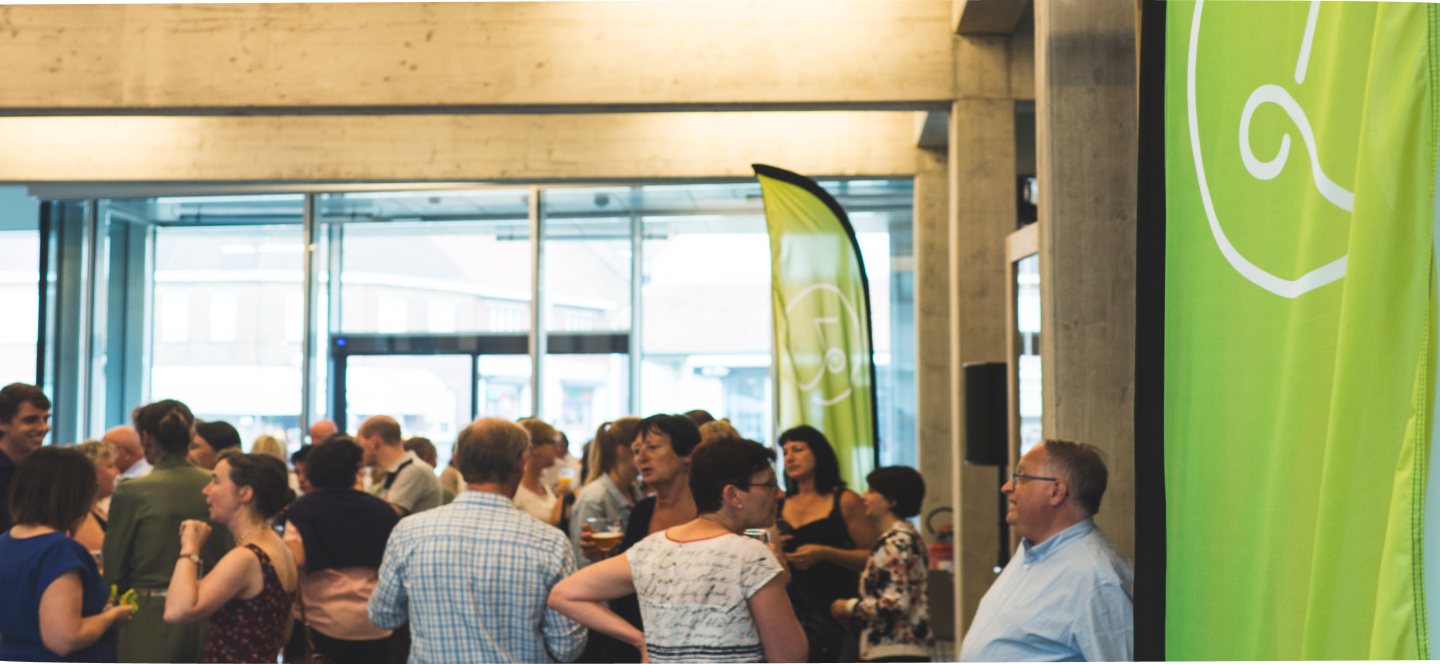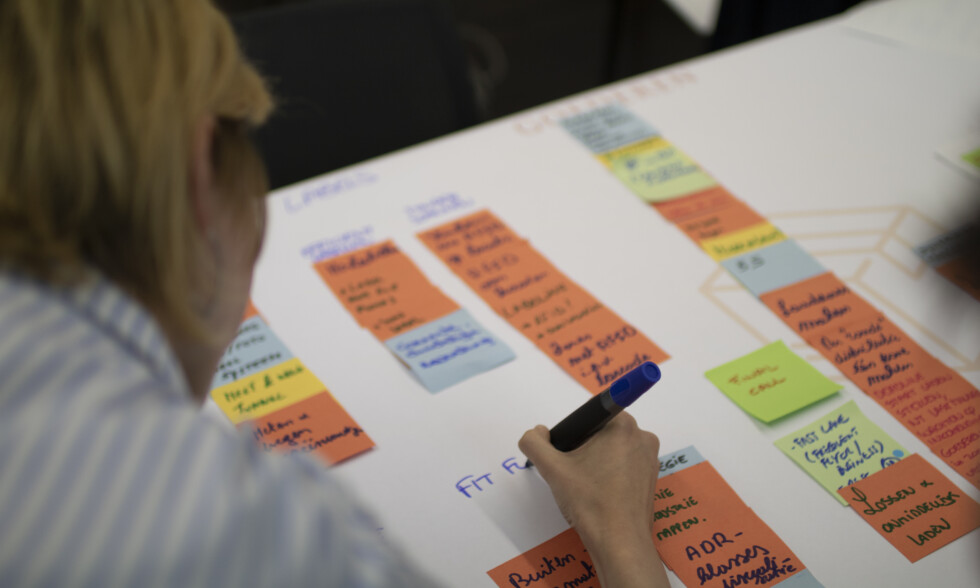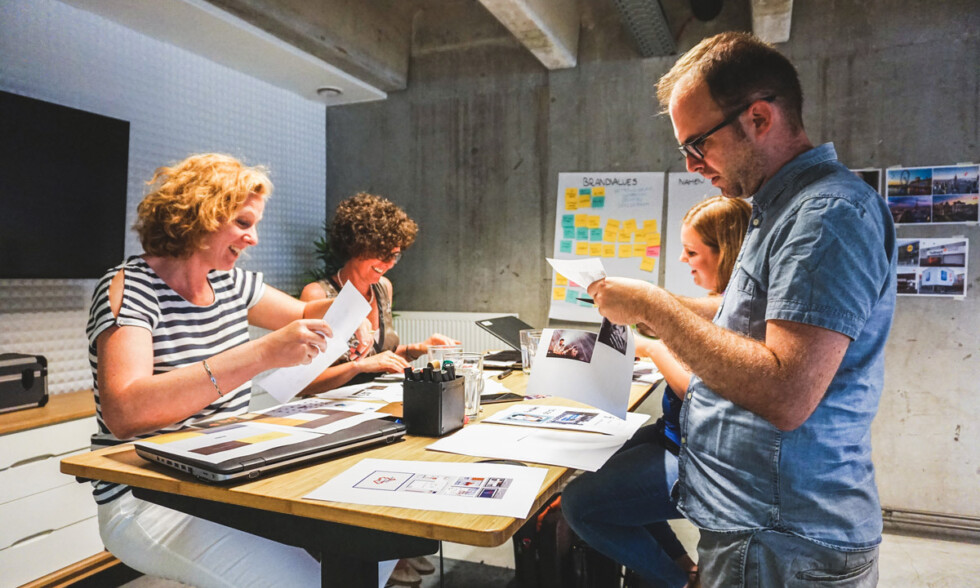Why we believe in co-creation
Involving end-users and stakeholders in the design process increases the overall quality of the outcome and what's more, they gain ownership of the solution themselves. By supporting and including them in the process, rather than to just hand the solution on a platter, they will be more determined to not only support, but even help defend the solution.
Carrousel
Our approach
Throughout a project, when we need knowledge and experience of multiple stakeholders or end-users, we invite them to get involved in the design process. Our open and blended approach encourages an invested involvement in the entire design process, and benefits both end- users and stakeholders in the outcome, resulting in a tested solution everyone supports.
A co-creation session is a facilitated workshop with a diverse group of people to make (strategic) design decisions together. This may be coming up with ideas or developing prototypes for a specific topic. These sessions mostly cover three different phases: diverge, cluster and converge. Different methods are used in each phase to ensure all participants can get involved and provide their insights.
It is crucial to end a co-creation workshop with a concrete output, we really emphasise prototyping. The value of a prototype as a visual working model of your idea, is it allows you to capture direct feedback from your users and stakeholders at an early stage of an idea before committing resources to implementation. It reduces investment risk and provides a tangible version of that idea easy to communicate with others.
Tools & methods
Brainwriting
The idea is to build on the ideas of others. By formulating and passing on ideas, surprising concepts are created.
Lotus blossom
This brainstorm technique focuses on associative thinking. One starts from a central topic and iteratively comes up with new ideas.
Opposite thinking
This helps when you are stuck in assumption based thinking. It is easier to start thinking about what you don't want, and then turn the question around.
COCD matrix
This selection method is the first step in the convergence phase and ensures that ordinary, original and challenging ideas are categorised.
Selection methods (dot voting, poker chips)
Once ideas have been clustered into categories, we make a selection based on everyone's preferences using voting dots or poker chips.
Prototyping
It allows us to quickly test and iterate ideas. We use various sorts of prototypes, each with a different level of fidelity.
Benefits:
Different perspectives:
Bringing together different people and perspectives leads to interesting and unexpected ideas that would not otherwise arise.
Get buy-in (for a new solution)
When people participate in the thought process behind ideas and concepts, they are more inclined to help defend the solutions.
Hands on:
Co-creation and prototyping are hands-on methods that deliver quick results because ideas are quickly visualised and tested.
Related cases

Social services Ghent
Stimulating co-creation with homeless youth in search for effective housing solution

The Flemish Building Passport
Everything you need to know about your home in one single location

Municipality of Zedelgem
Co-creating a citizen centred service offering for the town and social services of Zedelgem




